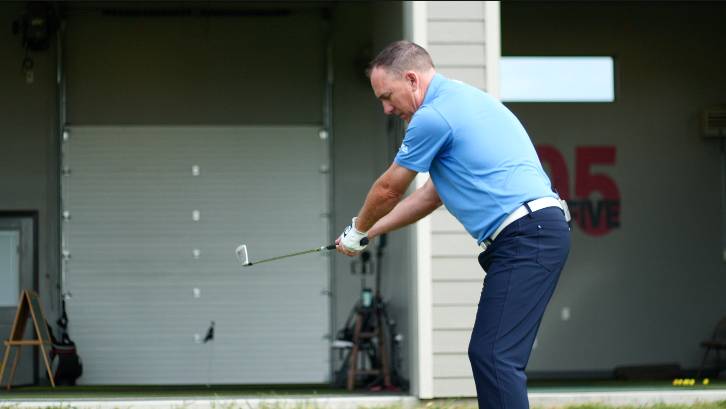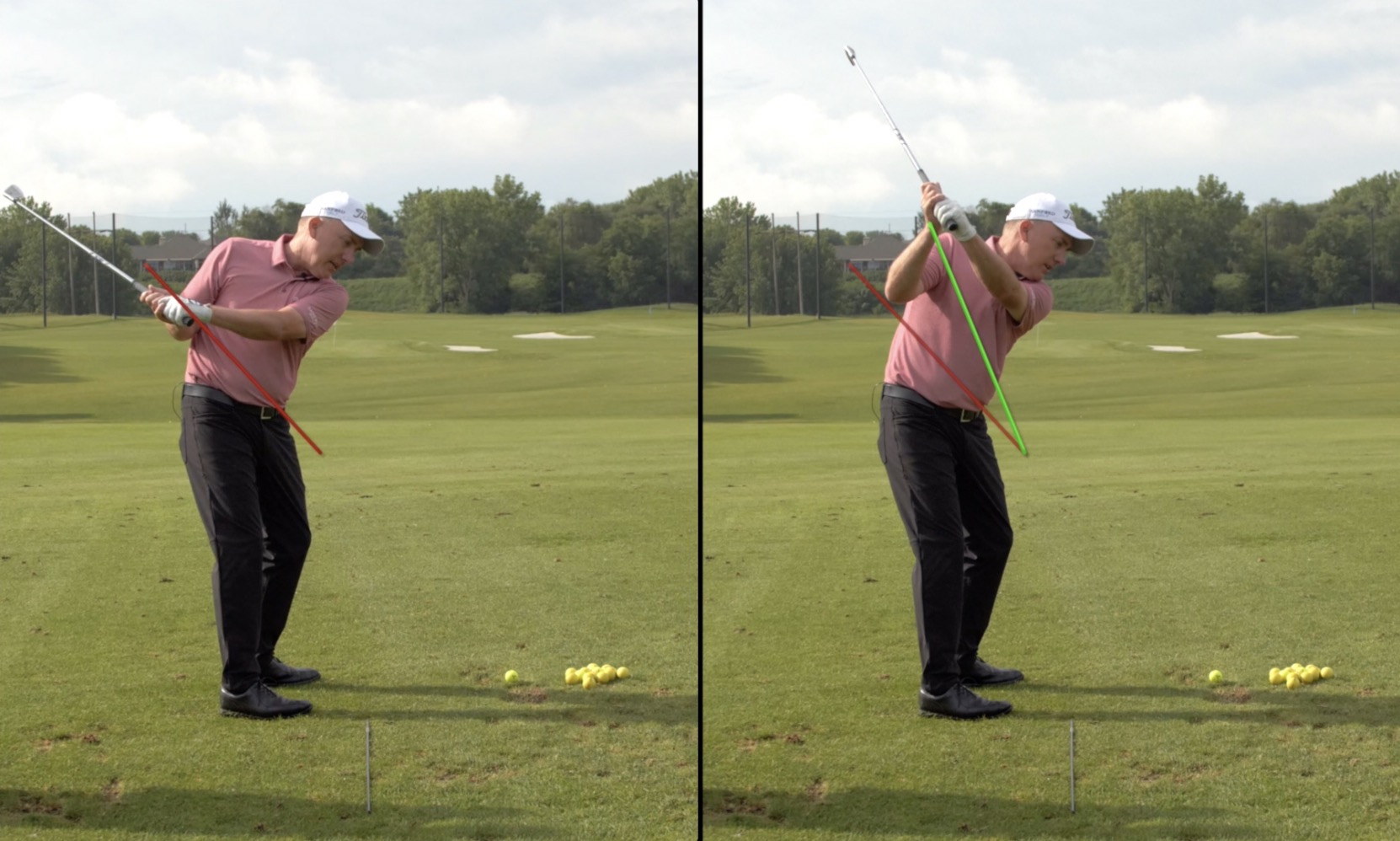The Quick Fix for a Golf Swing Connection Problem
Can’t Stop Slicing or Fading It? Failing to Take Divots? You’ve Probably Got a Golf Swing Connection Problem.
Got a golf swing connection problem?
If anyone’s ever told you that you’re not staying connected in your golf swing, then you do. Another sign might be that you’re struggling to keep your ball flight straight or failing to take divots with your irons.
Truth be told, disconnection is one of the most common swing faults among casual golfers, especially as we get older and start losing range of motion. Fortunately, there’s an easy fix for it.
In this article, I’m sharing a quick fix for a runaway arm. This tip comes straight from my book, The Bad Lie: Why Traditional Golf Instruction is Failing You (And What to Do Instead).
You’ll learn why it’s so easy to get disconnected and how to reverse the problem. First, let’s start with the diagnosis.
Signs of the Struggle
You might have a problem with golf swing connection if:
- You keep slicing it.
- You keep fading it.
- You’re not taking divots.
Granted, a disconnected swing isn’t the only swing fault that could cause these issues, but it’s an incredibly common culprit.
What’s Going Wrong?
So how does this happen? Why do so many golfers struggle with golf swing connection?
Simply put, your brain and body are trying to problem solve without consulting you.
Your brain knows the goal is to get a long swing in order to pick up as much distance as possible.
Your body’s trying to make it happen, but it’s restricted by a limited range of motion. That’s why disconnection tends to get worse with age, injury, or surgery—even more so if you’re trying to get length with a flat backswing.
You can’t rotate as deeply as you need to for length, so your mind and body compensate with an arm reach. Your lead arm stretches up and away from your chest.

Why is that a bad thing?
Well, as your lead arm disconnects from your body’s rotation, you open the clubface and stray from your swing path.
The result?
Poor contact, a weak shot, and probably a slice or a fade.
And if you use the up-and-back swing motion I recommend in the Vertical Line Swing System, that runaway arm pulls you off course. That means you no longer get the speed and contact benefits of following a vertical swing path.
Now, it’s important to note that proper golf swing connection requires a little balance between unity and freedom of motion.
You want to maintain a sense of connection between your upper arm and your body without feeling like they’re glued together.
You want a connected arm, not a cemented arm. A free arm, not a renegade arm.
Fortunately, finding the sweet spot is really simple.
Golf Swing Connection: The Quick Fix
First, let’s clarify what good golf swing connection looks like.
As your body rotates back, the lead arm should stay in line with your upper body so your hands end up just above your shoulder.

When your arm runs away from you, you wind up with your hands way up in the air.
If you’re getting a face full of your own upper arm, you have a disconnection problem.
Here’s an easy trick to for fixing it:
The Steps
- Hold your golf club straight out in front of you.
- Lift your lead arm and set it on your chest.
- Feel that connection and maintain it as you make your swing.
You’re not looking to create tension or squeeze the arm into your chest. You’re just feeling connection and allowing your arms to naturally follow the rotation of your body.
If you need help finding the connection/freedom balance, check out the VLS Stacker, a training device that encourages connectino without promoting tension.
Want to Give Your Game an Even Bigger Boost?
Now, if you want to go one step further, you can adjust your swing path to avoid a disconnection problem, as well as a ton of other amateur swing faults.
I’m referring to the Vertical Line Swing System, a method that’s way easier than traditional techniques and helps you get better distance and contact without twisting, straining, or spending hours upon hours at the driving range.
If you’d like to learn more, check out my book, The Bad Lie. It’s packed with easy fixes like this one, plus a comprehensive guide to the Vertical Line Swing, customizable practice plan, and more.
In the meantime, drop into the comments and let me know what you thought about this tip for golf swing connection. Did it help? Do you have your own suggestions to share?
Don’t hold back. We always love hearing from you.



I’m really in need of one your videos about distance from the ball at address.
Thank you
Joe,
Here you go, hope this helps. https://youtu.be/FTbF-32SA2Q?si=9hBIUavAb2zlgsi3